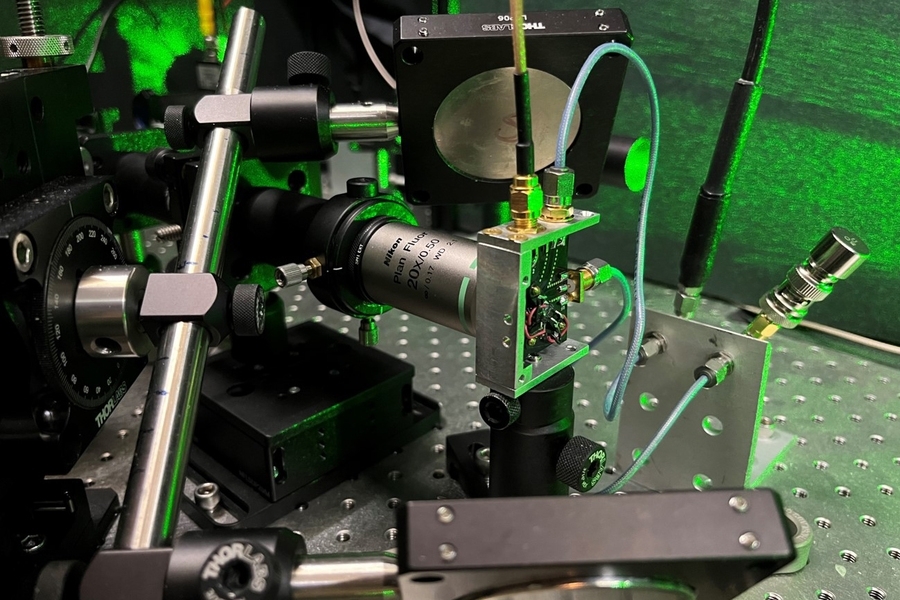In a paper published in the American Chemical Society’s journal Nano Letters, they report the synthesis of semiconductor “giant” core-shell quantum dots with record-breaking emissive lifetimes. In addition, the lifetimes can be tuned by making a simple alteration to the material’s internal structure.
The group, which included collaborators from Princeton University and Pennsylvania State University, demonstrated a new structure-property concept that imparts the ability to spatially localize electrons or holes within a core/shell heterostructure by tuning the charge carrier’s kinetic energy on a parabolic potential energy surface.
According to UIC chemist Preston Snee, this charge carrier separation results in extended radiative lifetimes and in continuous emission at the single-nanoparticle level.
Snee and the study’s first author, Marcell Pálmai, UIC postdoctoral research associate in chemistry, teamed with Haw Yang of Princeton and others to excite the quantum dots particle with light to put it in the “exciton” state. The exciton is an electron/hole charge pair, and in the new materials, the electron becomes displaced from the center to the shell, where it becomes trapped for upwards of 500 nanoseconds, which represents the record for such nanomaterials.
These new particles have great efficacy for fundamental biological discovery, according to the researchers.
The quantum dots presented in their paper emit at red wavelengths, which minimizes scattering, while the long lifetimes allow for biological imaging to be performed with less background noise. At the single particle level, the new quantum dots emit continuously, so a research scientist can tag proteins relevant to cancer and follow the biological dynamics without losing track of the signal which is currently a common problem with such studies.
In future research, the group plans to demonstrate that the materials make good components for optical devices such as micron-sized lasers.
Reference : Marcell Pálmai, Joseph S. Beckwith, Nyssa T. Emerson, Tian Zhao, Eun Byoel Kim, Shuhui Yin, Prakash Parajuli, Kyle Tomczak, Kai Wang, Bibash Sapkota, Ming Tien, Nan Jiang, Robert F. Klie, Haw Yang, Preston T. Snee. Parabolic Potential Surfaces Localize Charge Carriers in Nonblinking Long-Lifetime “Giant” Colloidal Quantum Dots. Nano Letters, 2022; DOI: 10.1021/acs.nanolett.2c03563




